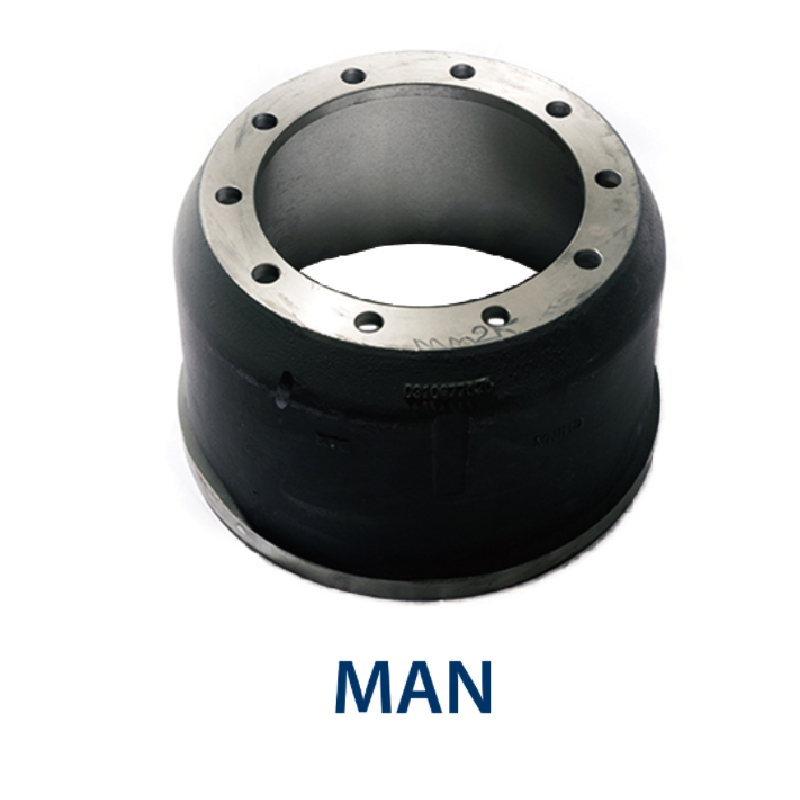Dec . 04, 2024 10:18 Back to list
Understanding the Material Composition of Brake Drums and Their Benefits
Are Brake Drums Cast Iron? Understanding the Materials Behind Brake Systems
Brake systems are vital components of any vehicle, providing the necessary stopping power and ensuring safety on the roads. Among the various parts that make up a brake system, brake drums play a crucial role, especially in older vehicles and certain types of service vehicles. A common question that arises regarding brake drums is whether they are made of cast iron. This article explores the materials used in brake drums, focusing on cast iron's properties and its advantages and disadvantages in automotive applications.
What Are Brake Drums?
Brake drums are part of a drum brake system, which operates on a principle where friction is generated by pressing brake shoes against a rotating drum. When the driver presses the brake pedal, hydraulic force applies the brake shoes to the inner surface of the drum, creating the friction necessary to slow down or stop the vehicle. This system is commonly found in older cars, trucks, and buses due to its reliability and simplicity.
Materials Used in Brake Drums
Traditionally, brake drums have been made from cast iron, a material known for its strength, durability, and heat resistance. Cast iron is an alloy that primarily contains iron, carbon, and silicon. The benefits of using cast iron in brake drums include its ability to absorb heat generated during braking, its proficiency in dissipating heat quickly, and its overall robust nature, which enables it to withstand significant wear and tear.
However, modern developments in automotive manufacturing have introduced other materials like aluminum and composite materials. Aluminum brake drums are lightweight and can help improve vehicle efficiency and performance. Composite materials, on the other hand, provide a higher resistance to heat and corrosion. These materials are becoming increasingly popular in high-performance vehicles where weight reduction is critical.
Advantages of Cast Iron Brake Drums
1. Heat Dissipation One of the most significant advantages of cast iron is its ability to absorb and dissipate heat effectively. During braking, heat is generated due to friction, and a brake drum made of cast iron can manage this heat efficiently, reducing the risk of brake fade.
are brake drums cast iron

2. Durability Cast iron is known for its strength and durability, making it an excellent choice for parts that endure high stress and wear. It can withstand the rigors of frequent stops, heavy loads, and tough driving conditions.
3. Cost-Effectiveness Cast iron is relatively inexpensive compared to some modern materials, making it a cost-effective choice for manufacturers. This affordability translates to lower repair and replacement costs for vehicle owners.
Disadvantages of Cast Iron Brake Drums
1. Weight Although the density of cast iron contributes to its durability, it also makes the brake drums heavier than alternatives like aluminum. In a world where reducing weight improves fuel efficiency and performance, this can be a drawback.
2. Corrosion Susceptibility While cast iron is strong, it can be prone to oxidation and rust if not properly maintained. This susceptibility requires more care, especially in environments with high moisture levels.
3. Limited High-Performance Applications While cast iron drums perform well in everyday driving situations, they may not meet the requirements for high-performance vehicles, which often demand better heat resistance and weight savings leading to the adoption of advanced materials.
Conclusion
In conclusion, brake drums have traditionally been made from cast iron due to its numerous benefits, such as heat dissipation, durability, and cost-effectiveness. However, the evolution of automotive materials has led to the introduction of alternatives like aluminum and composites, particularly for high-performance and lightweight applications. While cast iron remains a reliable choice for many vehicles, understanding the specific demands of a vehicle and its intended use is crucial for selecting the right material for brake drums. As automotive technology continues to advance, the materials used in brake systems will likely evolve to meet new standards and performance requirements.
-
Scania Brake Drums: OEM Quality for Optimal Safety & Durability
NewsAug.16,2025
-
R.V.I: Advanced Remote Visual Inspection for Precision
NewsAug.15,2025
-
Discover HYUNDA: Innovative Vehicles, Equipment & Solutions
NewsAug.14,2025
-
R.V.I: Unlock Advanced Insights & Real-time Performance
NewsAug.13,2025
-
Kamaz Brake Drum: Durable & Reliable for Heavy Duty Trucks
NewsAug.12,2025
-
Heavy Duty Iveco Brake Drum - Premium Quality & Safety
NewsAug.11,2025
